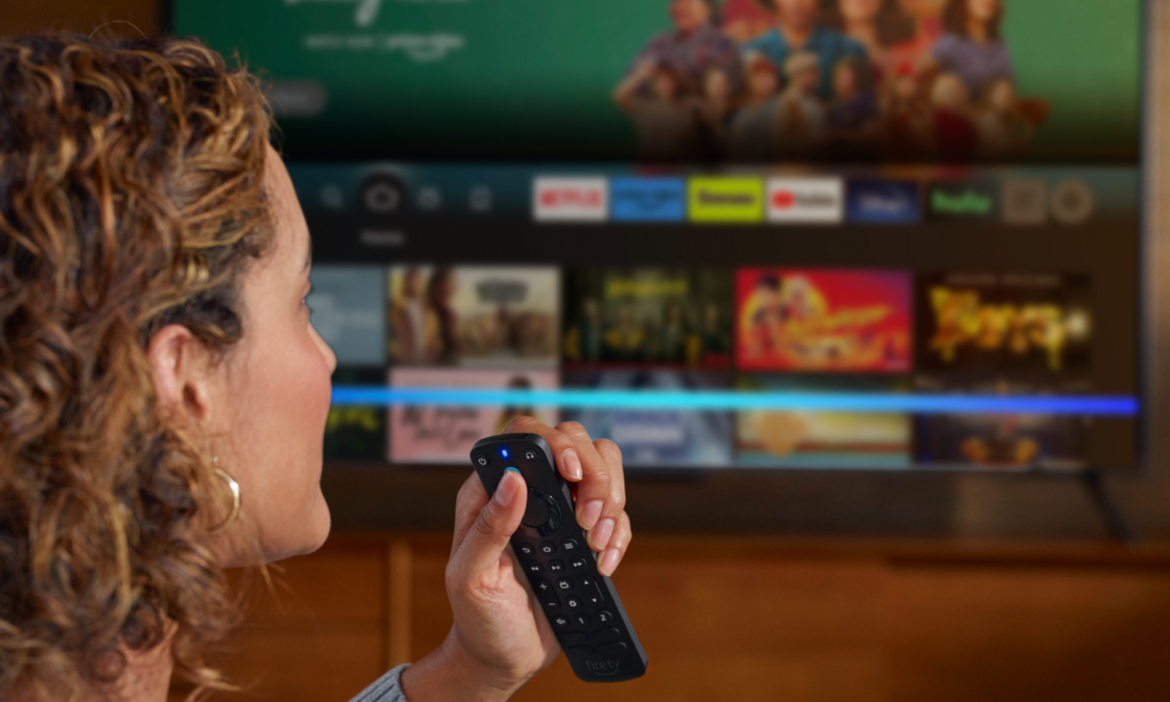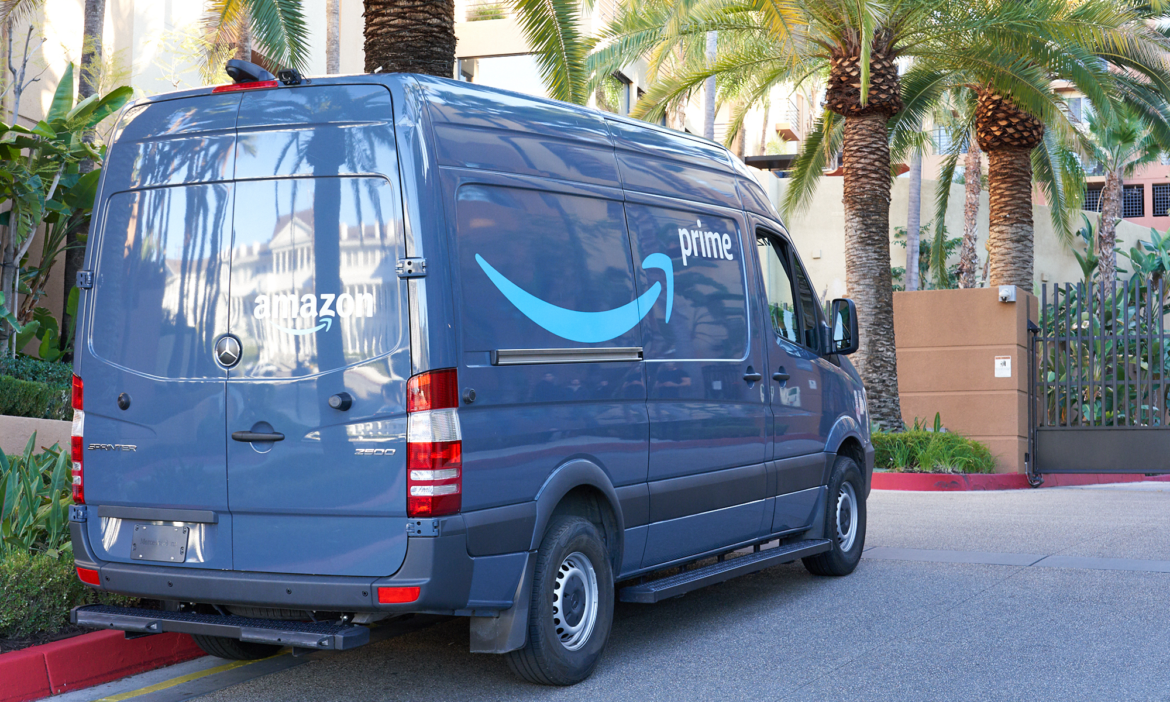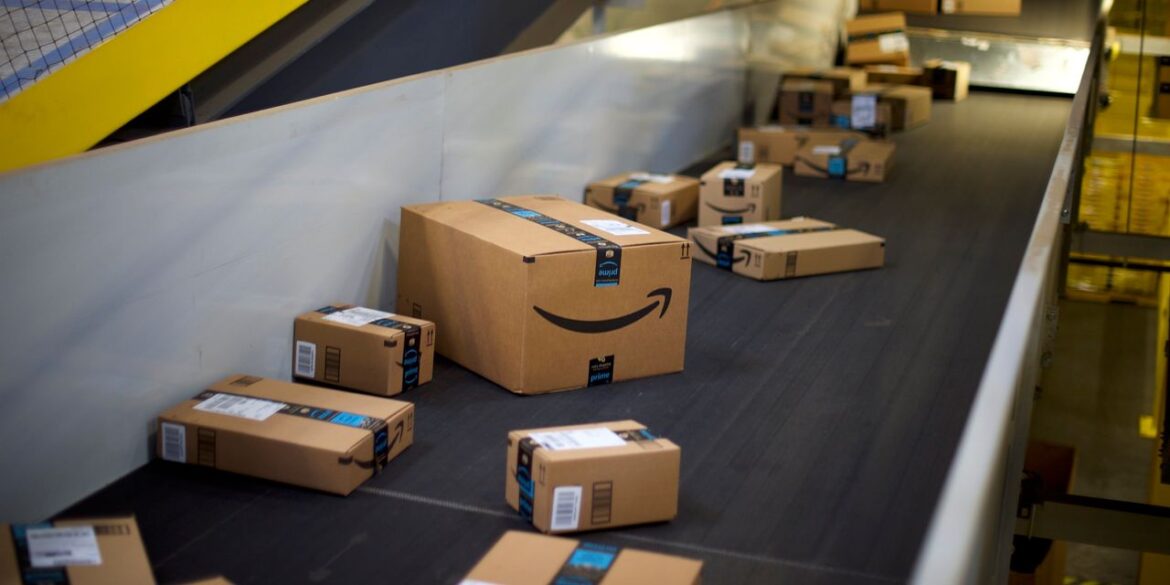
The company is edging closer to a $2 trillion market value.
Source link
Amazons
Amazon parcels are prepared for delivery at Amazon’s Robotic Fulfillment Centre on December 19, 2023 in Sutton Coldfield, England.
Nathan Stirk | Getty Images News | Getty Images
Every year, the U.S. goes through enough cardboard boxes for shipping to pave a one-mile-wide road from New York City to Los Angeles three times, or build a mile-high cardboard wall around the entire continental U.S.
Among the primary targets to help reduce this mountain of packaging, the most notable may be the Amazon shipping box or envelope. In 2022, 11% of Amazon orders worldwide were sent in original manufacturer packaging. The company has yet to release its 2023 figure for the initiative designed to get rid of Amazon’s signature brown box, called the Ships in Product Packaging program.
It identifies products that might work, contacts vendors and then, to ensure that packages won’t be damaged during delivery, Amazon works with those companies to test products in a lab. Packages need to be able to survive drops off a conveyor belt, vibrations and shaking on the truck or the delivery person accidentally dropping the package while walking to the door.
“We qualify products ahead of time to make sure that they are going to deliver to customers without damage. Then we simulate the ecommerce fulfillment process as part of that testing process so as products are enrolled in the program, we make sure they meet that minimum standard to arrive safely,” said Kayla Fenton, Amazon senior manager of packaging innovation.
Testing varies depending on what the product is. Liquid items are more tricky than a stuffed animal. “Our tests are designed to react to the particular product type and its inherent fragility,” Fenton said. The test results are then fed into machine learning models which go through the Amazon catalog for more items that can be added to the program. For example, if a vendor sells a red tee-shirt, chances are the blue tee-shirt will perform just as well, Fenton said.
Products get tested five times, and each time something breaks, it helps the machine learning models evaluate what went wrong and how to fix it. Feedback from customers also gets fed into the system. If customers complain about damage and return more items because of it, Amazon can go back to using boxes.
Go North Group, a Fulfilled by Amazon aggregator that sells a wide range of home and garden goods, health, sports and pet products, was among those asked to join Amazon’s ships in packaging program. Johan Stellansson, Go North’s supply chain director, said the testing revealed that 80% of the company’s products can be shipped without additional packaging, including its MalsiPree portable water bottle for dogs.
In some cases, an extra piece of tape was enough to add some extra stability to the box so it could go through the shipping process undamaged, including some of the company’s pet stain and odor remover products, which come in bottles that are then packed in boxes. Bigger products that require a lot of padding didn’t make it into the program and Stellansson said it caused the company to reconsider whether it should continue selling the product on Amazon. “We wouldn’t develop a new product unless we can ship it in the manufacturer’s boxes,” he said.
Many efforts to reduce packaging remains works in progress, but a simple strategy Amazon is making more use of which reduces packaging use is boxes direct from companies including Clorox, McDonalds, and Starbucks with no additional Amazon cardboard.
Amazon
Amazon initially opened the program to vendors and has since opened it to sellers. Vendors are more like suppliers to Amazon while sellers operate more independently.
Fenton noted that as Amazon’s warehouse network has developed and gotten closer to customers in some areas, the delivery process is shorter, which allows the company to ship even more items with no packaging. Also, not all items make it into the program. Some never will. Personal items, such as adult diapers or sexual wellness products, will not be shipped without boxes or mailers for privacy reasons. Also, Fenton emphasized that customers can choose at checkout whether or not to ship in the manufacturer’s packaging.
Not all items can ship without a box or mailer. For that, Amazon has been working to reduce packaging, especially plastic — swapping out plastic bubble mailers with paper mailers and plastic bubbles with paper. It recently converted a fulfillment center outside of Cleveland, Ohio, from plastic to 100% curbside recyclable paper. The center uses a machine that scans items and then creates a box or envelope that is precisely the right size, reducing the amount of air and using less packaging, which adds weight.
Automation and machine learning play a role in minimizing packaging. “The more that we can automate, the more control we have over ‘right-sizing.’ We can really wrap or box to any size, dimension or product, provided that we can measure it properly with the cameras,” said Pat Lindner, vice president of mechatronics and sustainable packaging at Amazon. Ultimately, the move to reduce packaging has multiple benefits, saving money and reducing waste.
“We think this is good for the environment. We think this is good for the customers because it’s less material to have to deal with at home,” Lindner said.
Consumer habits remain tough to change
The move to reduce or eliminate extra packaging is just part of the solution. Another is reusable packaging. Amazon has experimented with reusables in the past — mainly through Amazon Fresh grocery deliveries — but discovered that too few customers returned the insulated totes.
Asking people to change their usual habits by returning packaging is an uphill battle. Even so, some companies are introducing reusable packaging, said Michael Newman, CEO of Returnity Innovations, which provides reusable boxes and bags for companies such as Rent the Runway and clothing brand Vuori.
Newman said that reusables work best when people don’t have to change habits. These circumstances include when people are already returning something or when they’re buying several sizes of the same item to try on at home. Reusable packaging can also work when goods are shipped to a retail store, and employees are responsible for returning the boxes.
“It doesn’t require behavior change from consumers,” he said.
Packaging is designed to withstand the average number of reuses, which could vary from five to 20 times, depending on the company. Newman said that for reusables to work from a carbon footprint perspective, customer return rates need to be 90% to 95%. Reusables typically use more resources, they’re thicker plastic, so if they are thrown out or not reused often enough, the environmental impact can be worse than using single-use plastic.
Matt Semmelhack, CEO and co-founder of Boox, supplies largely luxury direct-to-home brands like Goop and Rhode with reusable shipping boxes, but since the boxes have to be returned in a separate step, the return rate is lower, at 20%. Still, he is optimistic that with legislation, consumer habits will change. “There’s going to be an inflection point, and it’s probably going to be when Walmart or Amazon starts doing it,” he said.

Amazon’s stock could lose to Walgreens’ this year if the Dow jinx holds
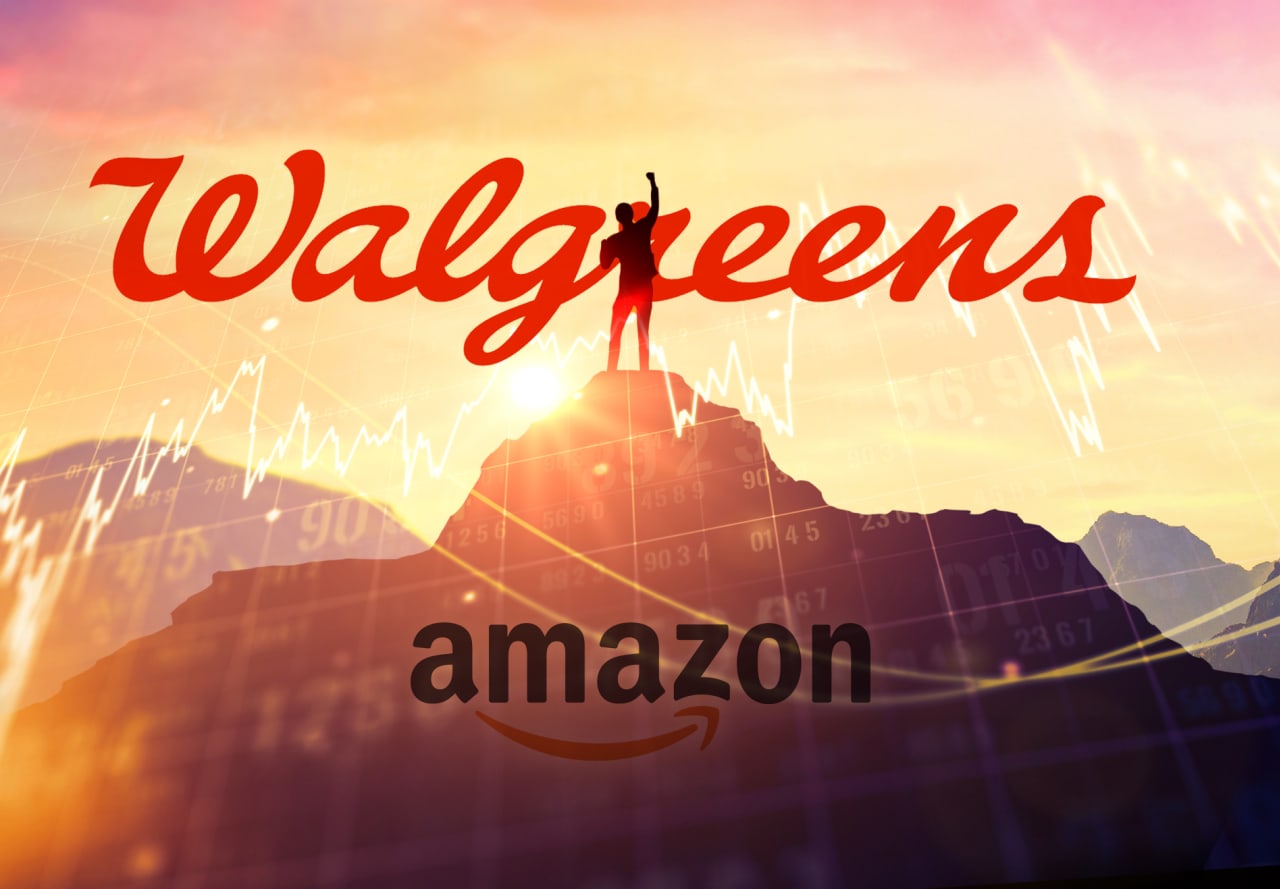
The keepers of the Dow Jones Industrial Average have been very good at making sure the changes they make to the venerable stock-market barometer are seamless to investors, but nobody’s perfect.
How the 128-year old index
DJIA
is constructed is a secret closely guarded by S&P Dow Jones Indices. But some things, such as the influence each stock has, are known once changes are made.
There’s also the matter of the “Dow jinx,” which has seen new members tend to underperform the members they replaced.
The Dow is different than other market trackers, because the price is determined by dollar-amount changes in the components’ stocks. So stocks with higher prices — not companies with larger market capitalizations like those in the S&P 500 index
SPX
and the Nasdaq Composite Index
COMP
— have greater influence on the index’s price.
Rather than a weighting based on market cap, there is a “divisor,” or a number that a Dow stock’s price change is divided by to determine what effect that stock’s move has on the Dow.
As of Friday, that divisor was 0.15172752595384. That means that each $1 change in any of the Dow stocks moved the Dow’s price by 6.59 points.
On Monday, Walmart Inc.’s
WMT,
stock split will lower its price by two-thirds. And as of Friday’s close, the price of incoming Amazon.com Inc.’s stock
AMZN,
was roughly eight times the price of outgoing Walgreens Boots Alliance Inc.’s
WBA,
Also read: Why you can count on the Dow making changes in February
With those changes, the divisor increases slightly to 0.15265312230608, meaning the price changes of all the other Dow stocks will have a little less influence on the Dow’s price. For each $1 change, the Dow will now move by 6.55 points.
At Monday’s open, Amazon will be the third-largest company in the Dow by market cap, but will rank 17th out of 30 by price. A 1% change in Amazon’s stock would move the Dow by 11.5 points. But a 1% move in the Dow’s highest-priced stock, UnitedHealth Group Inc.’s
UNH,
which has about a quarter of Amazon’s market cap, would move the Dow by about 35.5 points.
The Dow keepers said the idea behind Monday’s change was to increase exposure to consumer retail, as well as other business areas. In effect, the keepers swapped a stock with a negative correlation to the market with one with a relatively high correlation.
For the past two years, the correlation coefficient between Walgreens’ stock and the Dow was negative 0.45, and between the stock and the S&P 500 it was negative 0.51.
Meanwhile, the correlation of Amazon’s stock with the Dow was 0.60 and with the S&P 500 it was 0.82.
S&P Dow Jones Indices also made a change to the Dow Jones Transportation Average
DJT,
by adding Uber Technologies Inc.’s stock
UBER,
while removing JetBlue Airways Corp.’s stock
JBLU,
Given that Friday’s closing price for Uber’s stock was about 12 times that of JetBlue’s, the Dow transports’ divisor increased to about 0.1673077 from 0.1627986.
Keep in mind that the Dow keepers aren’t trying to pick winners. Their mission is to match the market. And they’ve been pretty great at it over the long term. The Dow’s correlation with the S&P 500 was 0.93 over the past two years and was 0.99 over the past 10 years.
But for some unknown reason, a quirk of Dow changes has been that the performance of stocks that enter often get beat over the short term by those that leave.
It might seem inconceivable to some that Walgreens’ stock would outperform Amazon’s, which is one of the so-called Magnificent Seven group of tech stocks, but surely many thought the same when Apple Inc.’s
AAPL,
stock replaced AT&T Inc.’s
T,
In the year before Apple entered the Dow on March 19, 2015, the technology giant’s stock soared 71%, while telecom stalwart AT&T’s stock gained just 3.4%.
One year after the stocks were swapped, Apple’s had dropped by about 18% and AT&T’s had run up 16%.
Don’t miss: Buffett saved $460 million by waiting to swap AT&T for Apple
Meanwhile, over the past year, Amazon’s stock soared about 83%, while Walgreens shares plunged 40%.
Also read: R.I.P. the ‘Magnificent Seven,’ says analyst who coined the big-tech moniker. Here’s why.
Here’s how the stocks that entered the Dow and the stocks they replaced performed in the year after the last changes were made, on Aug. 31, 2020:
-
Salesforce Inc.’s stock
CRM,
-0.29%
fell 2.2% in the year after it entered the Dow, while the stock it replaced, Exxon Mobil Corp.’s
XOM,
-0.88% ,
soared 34%. -
Shares of Amgen Inc.
AMGN,
+1.40%
were down 11% a year after going in, while Pfizer Inc. shares
PFE,
+0.76%
were up 28% a year after getting booted. -
The jinx didn’t always hold, however, as Honeywell International Inc. shares
HON,
-0.09%
rose 38% in the year after entering the Dow, while RTX Corp.’s stock
RTX,
+0.54%
climbed 36% in the year after exiting.
This Is Amazon’s Fastest-Growing Business by Far — and It Isn’t E-Commerce or Cloud Services
Pretty much all you have to know about Amazon‘s (AMZN 0.07%) fourth-quarter results is that the stock jumped close to 10% after they were announced. Yes, the Q4 results were that good.
Lower costs boosted profits for the company’s online shopping platform. Revenue for Amazon Web Services (AWS) vaulted 13% higher year over year. But as great as the news was for these units, there was an even better story: Amazon’s fastest-growing business, by far, isn’t e-commerce or cloud services.
Adding things up
Amazon CEO Andy Jassy said in the company’s Q4 earnings conference call that advertising revenue soared 26% year over year. That’s roughly double the growth rate for the company’s overall North America segment and AWS segment net sales. It’s also well ahead of the international segment’s year-over-year sales growth of nearly 17%.
CFO Brian Olsavsky noted that the impressive growth in advertising revenue was largely the result of sponsored products, where advertisers can run ads on Amazon’s e-commerce platform that promote their products. They can choose the keywords they want to target or allow Amazon’s systems to target keywords automatically.
Olsavsky said that Amazon’s “teams worked hard to increase the relevancy of the ads we show customers by leveraging machine learning.” He added that the company continues to improve the tools that enable advertisers to measure the return on investment for their advertising spending.
More to come
The trend of advertising revenue growth should continue, according to Olsavsky. And there are reasons to expect that the growth will accelerate.
Amazon recently began selling ads on its Prime Video streaming service. Customers can opt out of the ads by paying extra each month. All of the revenue generated by Prime Video advertising came after the end of the company’s fourth quarter.
Streaming advertising, in general, is a top priority for Amazon. Olsavsky stated that the company is exploring ways to boost advertising not only on Prime Video, but also on Fire TV, FreeVee, and live-streaming service Twitch.
Amazon is also working hard to make it easy for advertisers to spend their money on its platforms. For example, Jassy mentioned that the company is creating tools that enable advertisers to upload a picture with generative AI creating advertising copy based on the picture, and vice versa.
Extra benefits for Amazon
Advertising on Prime Video could also provide extra benefits for Amazon. Jassy said in the Q4 call, “We have increasing conviction that Prime Video can be a large and profitable business on its own.” Ad revenue could help make this scenario a reality.
Amazon’s profitability is already increasing nicely. In Q4, the company’s earnings skyrocketed to $10.6 billion from $0.3 billion in the prior-year period. Jassy’s vision of Prime Video becoming profitable would help even more.
But there’s another angle for Amazon here, too. Jassy stated that ads on Prime Video will enable the company to “continue investing meaningfully in content over time.” New compelling content could attract more subscribers to Amazon Prime.
That’s a big deal for Amazon. Bank of America analysts once estimated that Prime members spend close to four times more than non-Prime shoppers.
Should you buy Amazon stock because of advertising?
I don’t think that Amazon’s fast-growing advertising business is the main reason to buy the stock. My view is that the strong AI tailwind for AWS ranks as the best thing Amazon has going for it.
However, the best stocks give investors multiple reasons to buy. And I’d argue that Amazon is one of the best stocks around. Its advertising growth makes it even better.
Bank of America is an advertising partner of The Ascent, a Motley Fool company. John Mackey, former CEO of Whole Foods Market, an Amazon subsidiary, is a member of The Motley Fool’s board of directors. Keith Speights has positions in Amazon and Bank of America. The Motley Fool has positions in and recommends Amazon and Bank of America. The Motley Fool has a disclosure policy.
Amazon’s Ring will stop letting police request doorbell video footage
A Ring Stick Up Cam is pictured at the Amazon Headquarters in Seattle following a launch event on Sept. 20, 2018.
Stephen Brashear | Getty Images
Amazon‘s Ring will no longer allow police to request users’ doorbell video footage in its neighborhood watch app.
In a blog post on Wednesday, Ring said this week it plans to discontinue its “Request for Assistance” tool, which allowed law enforcement to submit requests for users’ footage in their communities through a publicly accessible post in its Neighbors app.
“Public safety agencies like fire and police departments can still use the Neighbors app to share helpful safety tips, updates, and community events,” Eric Kuhn, head of Neighbors, wrote in the post. “They will no longer be able to use the RFA tool to request and receive video in the app.”
Ring in 2021 made police requests for user footage public in its Neighbors app. Previously, law enforcement could message users privately to request clips from their smart doorbell cameras.
Police can still obtain Ring video footage using a search warrant or subpoena. In response to a 2022 letter from Sen. Ed Markey, D-Mass., questioning its police partnerships, the company disclosed that Ring may provide footage directly to law enforcement “in cases involving imminent danger of death or serious physical injury to any person.”
Amazon acquired Ring in 2015 for a reported $1 billion. The home security company is primarily known for its connected doorbell devices, which allow users to record activity in front of their homes, though it has expanded to include a portfolio of products ranging from camera-equipped floodlights to flying security camera drones.
Ring has long sparked controversy about privacy due to its controversial partnerships with hundreds of police departments across the U.S. Privacy advocates have expressed concern that the program, and Ring’s accompanying Neighbors app, have heightened the risk of racial profiling and turned residents into informants, with few guardrails around how law enforcement can use the material.
Jamie Siminoff, Ring’s former CEO, couched the features as a public safety tool that would help communities. “My goal would be to have every law enforcement agency on the police portal,” Siminoff told CBS in 2019. Siminoff stepped down last year and was replaced by Elizabeth Hamren, a former executive at Microsoft and Discord.
Kuhn wrote in the post Wednesday that Ring is introducing updates to the Neighbors app, including “Ring Moments, a new post category that expands the content allowed on the Neighbors app beyond just crime and safety,” and a “Best of Ring” tool that will feature a rotating selection of top videos.
WATCH: Amazon’s smart home dominance and how it could grow with iRobot acquisition
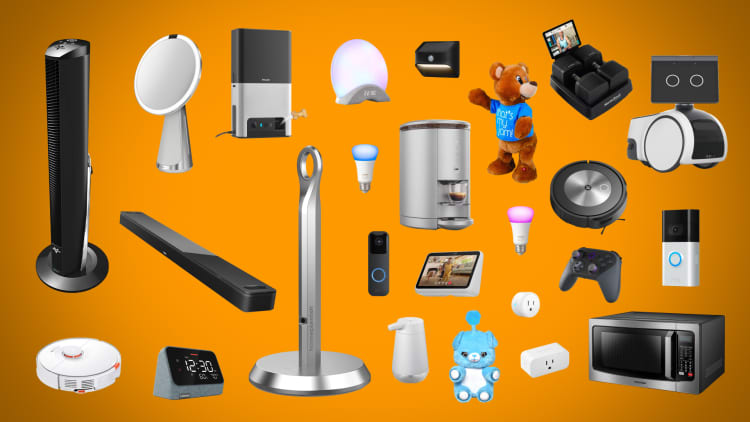
Don’t miss these stories from CNBC PRO:
Here’s everything coming to Amazon’s Prime Video and Freevee in December 2023
December is a fairly slow month for Amazon’s Prime Video, but there are still some big-name releases of note.
Eddie Murphy stars in the holiday movie “Candy Cane Lane” (Dec. 1), playing a suburban dad who makes a deal with a mischievous elf so he’ll win the neighborhood Christmas decoration contest — which, of course, backfires. A day later comes the Season 2 of the docuseries “Coach Prime” (Dec. 7) following Deion Sanders during his much-hyped first season coaching the University of Colorado football team.
The dad-core action drama “Reacher” (Dec. 15) is also back for its second season, as the oversized investigator punches his way into and out of trouble as he probes the mysterious murders of members of his former Army unit. While the first season was a full binge, Season 2 will be spread out: The first three episodes will drop on the 15th, with new eps weekly through Jan. 19.
More: Here’s what’s worth streaming in December 2023: Not much new, yet still a lot to watch
Also see: Here’s everything coming in December to Netflix | Hulu
Amazon’s
AMZN,
Prime Video also has a slew of Christmas movies, recent releases such as Wes Anderson’s “Asteroid City” (Dec. 12) and DC’s “The Flash” (Dec. 26), and will add all six seasons of two classic 1990s sitcoms: “Moesha” and “Sister Sister” (Dec. 30). Meanwhile, Amazon’s free service Freevee has all nine seasons of the original “Night Court” (Dec. 15) and all five seasons of the sci-fi conspiracy series “Fringe” (Dec. 31).
Here’s the complete list of what’s coming in December (release dates are subject to change):
What’s coming to Prime Video in December 2023
Dec. 1
50 First Dates (2004)
Baywatch (2017)
Candy Cane Lane (2023)
Click (2006)
Cry Macho (2021)
Death Rides a Horse (1969)
Death Warrant (1990)
Forces of Nature (1999)
Hot Tub Time Machine (2010)
I Wish (2011)
In the Heat of the Night (1967)
Kiss the Girls (1997)
Little Man Tate (1991)
Made of Honor (2008)
Mr. & Mrs. Smith (2005)
Murphy’s Law (1986)
Picture This (2008)
Stardust (2007)
Star Trek III: The Search for Spock (1984)
Star Trek V: The Final Frontier (1989)
Star Trek VI: The Undiscovered Country (1991)
Star Trek: Insurrection (1998)
Star Trek: Nemesis (2002)
Support the Girls (2018)
Tales from the Darkside: The Movie (1990)
The Conjuring: The Devil Made Me Do It (2021)
The Dead Zone (1983)
The Dirty Dozen (1967)
The Machinist (2004)
The Magnificent Seven (1960)
The Proposal (2009)
The Ring (2002)
The Turkey Bowl (2019)
The Wonderful Country (1959)
7th Heaven, Seasons 1-11 (1997)
My Three Sons, Seasons 1-12 (1960)
Dec. 5
Barbershop: The Next Cut (2016)
The Melodic Blue: Baby Keem (2023)
Dec. 7
Coach Prime, Season 2 (2023)
Dec. 8
Dating Santa (2023)
Dealing with Christmas (2023)
Merry Little Batman (2023)
World’s First Christmas (2023)
Your Christmas Or Mine 2 (2023)
Dec. 12
Asteroid City (2023)
Blue’s Big City Adventure (2022)
Dec. 15
Reacher, Season 2 (2023)
Dec. 19
Every Body (2023)
Dec. 21
Gigolò per caso (2023)
Dec. 25
The Flash (2023)
Dec. 26
Sound of Freedom (2023)
Dec. 27
Terminator: Genisys (2015)
Dec. 30
Baby Shark’s Big Show, Season 1 (2021)
Blue’s Clues, Season 1 (1996)
Blue’s Clues & You, Seasons 1-2 (2020)
Hit the Floor, Seasons 1-4 (2013)
Moesha, Season2 1-6 (1997)
Sister Sister, Seasons 1-6 (1994)
Team Umizoomi, Season 1 (2010)
The Affair, Seasons 1-5 (2014)
Tyler Perry’s Ruthless, Seasons 1-2 (2021)
What’s coming to Freevee in December 2023
Dec. 1
Earth to Echo (2014)
Everybody’s Fine (2009)
Gods of Egypt (2016)
Happy Christmas (2014)
Hitman’s Wife’s Bodyguard (2021)
Hotel Transylvania (2012)
Jason’s Lyric (1994)
Joey (1997)
Kick-Ass (2010)
Masquerade (1988)
Men in Black (1997)
Men in Black II (2002)
Nicholas Nickleby (2002)
Peter Pan (2003)
Repo Men (2017)
Sahara (1984)
Still of the Night (1982)
Tank Girl (1995)
Ted (2012)
The Adventures of Buckaroo Banzai Across
the 8th Dimension (1984)
The Adventures of Priscilla, Queen of the
Desert (1994)
The American (2010)
The Emoji Movie (2017)
The Gift (2015)
The Hitman’s Bodyguard (2017)
The Night of the Hunter (1955)
The Purge (2013)
The Secret Life of Pets 2 (2019)
The White Buffalo (1977)
Think Like a Man (2012)
Think Like a Man Too (2014)
FBI True (2023)
The Middle, Seasons 1-9 (2009)
Dec. 3
Mistletoe Mixup (2021)
Dec. 4
The Star (2017)
Dec. 6
Hollywood Houselift with Jeff Lewis, Season 2 (2023)
Dec. 7
A Lot Like Christmas (2021)
Dec. 8
The Fairy Princess & the Unicorn (2019)
Dec. 10
Copshop (2021)
Dec. 11
Spy Cat (2018)
Dec. 14
A Christmas Star (2021)
Dec. 15
Night Court, Seasons 1-9 (1984)
Dec. 20
When Hope Calls: Hearties Christmas Present (2021)
Dec. 21
Christmas Giveaway (2021)
Dec. 22
Sing 2 (2021)
Dec. 31
Stillwater (2021)
Fringe, Seasons 1-5 (2008)
The Waltons, Seasons 1-9 (1972)
Why Amazon’s Impending Acquisition of iRobot Is Bigger Than You Think
It’s been a roller-coaster ride for iRobot (IRBT 1.85%) shareholders since the company agreed to be acquired by Amazon.com (AMZN 0.64%) nearly 15 months ago.
Shares of the home robotics company, best known for its Roomba line of robotic vacuums, soared nearly 40% last Friday after Reuters reported that Amazon was finally poised to receive unconditional European Union antitrust approval to complete the acquisition. On Monday, however, iRobot stock pulled back nearly 20% after the European Commission (EC) issued a “statement of objections” to Amazon, detailing its view that acquiring iRobot may restrict competition in the market for robotic vacuum cleaners (RVCs).
It’s not just about the robots
For perspective, this is only the latest in a long-running saga surrounding the deal. The EC opened an in-depth probe into the acquisition back in July 2023 and is expected to issue a final ruling by Feb. 14, 2023.
Going further back, however, Amazon initially agreed to pay iRobot $61 per share in cash when the original deal was struck in August 2022. But the deal was effectively delayed when government antitrust regulators in both the U.S. and Europe promptly voiced concerns.
When iRobot subsequently had to take out a new $200 million financing facility to pay off existing debt and fund ongoing operations until the merger closed, the two companies, in July 2023, agreed to lower the price that Amazon would pay to $51.75 per share (though the deal’s $1.7 billion enterprise value was essentially unchanged).
So what’s the real reason Amazon is going out on a limb to spend $1.7 billion — a small fraction of its typical cash flow (free cash flow was nearly $9 billion last quarter alone) — to buy iRobot?
In my view, the EC’s latest objections to the iRobot purchase marks the latest proof that this is about much more than just adding iRobot’s line of home robots to Amazon’s product portfolio. Rather, it’s about a combination of competitive concerns in the narrow RVC space, and — more importantly — the advantages Amazon will gain through iRobot’s incredible data-collection capabilities in smart homes.
Amazon also owns Ring and Blink Home in the smart-home space and has deployed over 500 million devices enabled with its Alexa voice-assistant technology since introducing its Echo smart speakers in 2014.
Meanwhile, iRobot boasts over 19 million home robot users who’ve opted into its digital communications. And each of these users — including myself — happily allows their floor-cleaning robots to build detailed maps of their homes and habits.
iRobot’s newest Home App can do everything from suggesting cleaning schedules based on when users leave their homes to allowing users to remotely “check in” on any room in the house using their Roomba’s built-in cameras. I imagine Amazon — the owner of the world’s largest digital marketplace — could leverage this kind of data in a virtually countless number of ways.
That concern sits atop the EC’s statement of objections issued to Amazon this week. “The merged entity would likely gain more from additional sales of iRobot RVCs than it would lose from fewer sales of iRobot’s rivals and other related products on Amazon,” the EC warned. “Such gains include benefits from additional data gathered from iRobot’s users.”
Echoes of a previous antitrust challenge
Curiously, a subsequent Reuters report on Wednesday revealed that EC lawyers were initially opposed to sending the objections statement to Amazon — indicating the initial report of an impending unconditional approval was likely accurate.
That said, I expect Amazon will ultimately receive EU approval to close the deal — with conditions. Consider Google’s previous acquisition of Fitbit in 2020, for example, for which the internet search giant only received EU approval after agreeing to restrict its use of customers’ health-related data.
It remains to be seen exactly how restrictive regulators will ask Amazon to be with data collected from iRobot’s products. But if they push too far, it could easily neutralize one of the most significant catalysts that drove Amazon to acquire iRobot in the first place.
John Mackey, former CEO of Whole Foods Market, an Amazon subsidiary, is a member of The Motley Fool’s board of directors. Steve Symington has no position in any of the stocks mentioned. The Motley Fool has positions in and recommends Amazon and iRobot. The Motley Fool has a disclosure policy.
What Amazon’s CEO Just Said Should Excite Every Amazon Stock Shareholder
In this video, I will be talking about Amazon‘s (AMZN 6.83%) third-quarter earnings report and touch on a couple of important points that were mentioned during the earnings call. While Amazon stock might look expensive, it is becoming more profitable by the quarter.
*Stock prices used were from the trading day of Oct. 26, 2023. The video was published on Oct. 27, 2023.
John Mackey, former CEO of Whole Foods Market, an Amazon subsidiary, is a member of The Motley Fool’s board of directors. Neil Rozenbaum has positions in Amazon. The Motley Fool has positions in and recommends Amazon. The Motley Fool has a disclosure policy. Neil is an affiliate of The Motley Fool and may be compensated for promoting its services. If you choose to subscribe through his link, he will earn some extra money that supports his channel. His opinions remain his own and are unaffected by The Motley Fool.
Amazon.com Inc.’s stock secured its highest close in more than a year Monday as enthusiasm continues to build for the e-commerce giant’s potential to improve the financial performance of its retail business.
Shares of Amazon
AMZN,
ended Monday at $143.10, up 3.5%, to mark their best finish since Aug. 16, 2022, when they closed at $144.78, according to Dow Jones Market Data.
UBS analyst Lloyd Walmsley weighed in positively on Amazon’s e-commerce business Sunday, writing that he saw a path for the company to realize double-digit North America retail margins over time, and to hit 8% or 9% in 2025. For context, the consensus view currently calls for 5.4% North America retail margins in 2025.
While Walmsley kept his buy rating and $175 price target on Amazon shares unchanged, he’s encouraged by recent developments, including an enhanced arrangement with Shopify Inc.
SHOP,
and new fees for its Seller Fulfilled Prime program.
Read: Here’s Amazon’s path to a $200 stock price, according to one bull
“We see this agreement with Shopify, as well as the reinstatement of the Seller Fulfilled Prime (SFP) program, as a win/win and signs that AMZN [has] started ramping strategies to externalize and monetize Prime off-platform,” Walmsley wrote.
While the specifics of the Shopify deal are unknown, Walmsley thinks Amazon has made a smart long-term move.
“Trade press around the deal suggested Amazon highly wanted the deal, sought to ensure purchase metrics through [Buy with Prime] were shown in the Shopify dashboard, and did most of the integration work itself, suggesting they may not get any of the payment revenue stream from Shopify for now,” Walmsley said.
“But regardless, we see this as a potential revenue stream for Amazon over time,” he continued. “To the extent that merchants opt into Buy with Prime and users convert higher with Buy with Prime, over time this gives Amazon potential for significant leverage in future negotiations on the partnership.”
See also: Why Amazon is this analyst’s top internet stock pick
Amazon shares have gained 70% so far this year, as the S&P 500
SPX
has advanced 17%.
A Crash Like Amazon’s? This Scenario Could Push Bitcoin Back To $10,000
Bitcoin (BTC), the leading cryptocurrency in the market, has experienced a significant decline since mid-August, resulting in a stagnant price within a newly formed range. This decline has occurred amidst what many believe is an extended bear market in cryptocurrency, causing concerns about the future of Bitcoin’s bull cycles.
Bloomberg Intelligence’s Senior Macro Strategist, Mike McGlone, has drawn attention to the current similarities between BTC’s trajectory and the infamous crash of Amazon in the 2000s during the “Dot Com Bubble.”
McGlone’s analysis emphasizes the importance of learning from history and highlights the potential risks if retail investors flood the market, causing Bitcoin to become overbought.
Bitcoin Resemblance To Amazon’s Crash
Bitcoin’s remarkable growth potential is exemplified by its journey from trading at $1 in 2011 to its current value, representing a surge of 26,000 times. In comparison, Amazon, a prominent tech giant, achieved a 130-fold increase over a similar period, but it took approximately 25 years.
To further illustrate the parallels between Amazon and Bitcoin, during the dot-com boom in the 90s and early 2000s, Amazon capitalized on customer growth and adept capital fundraising to expand its product offerings.
Starting as an online bookstore, it rapidly evolved into a vast online retailer, connecting customers with a diverse range of products.
Amazon’s valuation soared during this period, reaching over 50 times its Initial Public Offering (IPO) value in December 1999. However, the exuberance in the market was short-lived.
The “Dot-Com Bubble” bursting led to a sharp decline in the Nasdaq Composite, heavily influenced by technology companies, from its peak in March 2000.
As the “Dot-Com” crash unfolded, numerous companies struggled to sustain their business models or secure sufficient funding, resulting in their closure. Even prominent start-ups like Pets.com and Kozmo, in which Amazon had invested, succumbed to the downturn.
As a result, Amazon’s stock experienced a significant decline, losing more than 90 percent of its value over two years.
The lessons learned from Amazon’s rise and subsequent crash serve as a cautionary tale for Bitcoin. McGlone warns that the entry of retail investors into the market increases the risk of overbuying and market saturation.
When an asset becomes excessively hyped, prices can detach from their underlying value, setting the stage for a potential correction. Retail investors, driven by Fear of Missing Out (FOMO), may overlook fundamentals and blindly chase price momentum, further exacerbating the risk of a downturn.
Furthermore, the expert noted that Bitcoin’s increasing correlation with equity prices raises concerns. The current high correlation between Bitcoin and equities indicates a growing interdependence between the cryptocurrency and traditional markets.
As Bitcoin moves into the mainstream rapidly, it becomes more susceptible to broader market forces. This amplified correlation could magnify the impact on Bitcoin’s price in a market downturn.
Despite Bitcoin’s current value of $26,000, McGlone warns of the possibility of a drop to $10,000, which could have significant consequences.
It could trigger a shift in market sentiment and result in significant losses for latecomers who entered the market during this year’s peak.

Bitcoin (BTC) is trading at $26,000, reflecting a marginal decrease of 0.3% over the past 24 hours and the seven-day time frame.
Featured image from iStock, chart from TradingView.com




